Upcycle Scrap Metals: Turn Junk into Jewelry
Have you ever looked at a pile of scrap metal and thought, “This could be something beautiful”? If you haven't, you’re in for a delightful surprise! Upcycling scrap metals into jewelry is not just a creative outlet; it’s a sustainable way to express your individuality while also being kind to our planet. In a world where fast fashion reigns supreme, taking a stand for sustainable fashion by transforming discarded materials into unique jewelry pieces is a bold statement. Imagine wearing a necklace that not only looks stunning but also tells a story of renewal and creativity. Sounds exciting, right?
In this article, we’ll dive deep into the fascinating world of upcycling scrap metals. We’ll explore various techniques, tools, and sources of inspiration that will empower DIY enthusiasts to embrace their inner artisans. Whether you're a seasoned crafter or a curious beginner, the journey of turning junk into jewelry is sure to ignite your passion for creativity. So, grab your tools and let’s get started on this thrilling adventure!
First off, let’s understand what scrap metals are. Scrap metals are essentially discarded metal materials that can be recycled and repurposed. They come in various forms, such as old jewelry, broken appliances, and even construction debris. Each type of metal has its own unique properties, making them suitable for different jewelry styles. For instance, copper is known for its malleability, making it easy to shape, while stainless steel offers durability and a contemporary look. By learning about these materials, you can effectively utilize them in your jewelry-making projects and create stunning pieces that stand out.
Now, you might be wondering, “What tools do I need to start?” Well, let’s break it down! Essential tools for upcycling scrap metals include basic jewelry-making tools like pliers, cutters, and soldering equipment. These tools are crucial for transforming raw metals into beautiful adornments. Moreover, as you progress, you might want to explore advanced techniques like metal stamping and etching, which can add intricate designs and personal touches to your creations. But don’t worry; we’ll cover all of this in detail later on!
Safety is paramount when working with metals. Before you dive into your crafting adventure, make sure you have the right protective gear and a well-organized workspace. This will not only enhance your crafting experience but also ensure that you remain safe throughout the process. Trust me; a little preparation goes a long way!
To spark your creativity, we’ll also delve into design inspiration. From nature-inspired designs that reflect the beauty of the natural world to modern geometric patterns that can easily be crafted from scrap metals, the possibilities are endless. Each piece you create can be a reflection of your personality and style, allowing you to wear your art proudly.
Finally, once you’ve crafted your stunning pieces, it’s time to share them with the world! We’ll explore effective strategies for marketing and selling your upcycled jewelry, including tips for building an online presence and networking with other artisans. After all, what good is a beautiful piece of jewelry if it’s hidden away? Let’s get those creations out there!
So, are you ready to transform scrap metals into stunning jewelry that not only looks good but also does good for the planet? Join me on this journey of creativity, sustainability, and self-expression!
- What types of scrap metals can I use for jewelry making? You can use a variety of metals such as copper, aluminum, brass, and stainless steel. Each has its own unique properties that can enhance your designs.
- Do I need advanced skills to start upcycling scrap metals? Not at all! Beginners can start with basic techniques and gradually learn more advanced methods as they gain confidence.
- Where can I find scrap metals for my projects? Look for scrap metals in old jewelry, broken appliances, or even at local recycling centers. You might be surprised at what you can find!
- How can I market my upcycled jewelry? Utilize social media platforms, create an online store, and participate in local craft fairs to showcase your unique creations.

Understanding Scrap Metals
This article explores the creative process of transforming scrap metals into unique jewelry pieces, highlighting techniques, tools, and inspiration for DIY enthusiasts looking to embrace sustainable fashion.
When it comes to jewelry making, scrap metals are a treasure trove waiting to be discovered. But what exactly are scrap metals? In simple terms, they are leftover pieces of metal that can no longer serve their original purpose. Instead of tossing them aside, why not turn them into something beautiful? Understanding the different types of scrap metals is crucial for any aspiring jewelry maker. Each type has its own unique properties and characteristics that can influence your designs.
Common types of scrap metals include:
- Aluminum: Lightweight and resistant to corrosion, aluminum is perfect for creating intricate designs without adding too much weight.
- Brass: Known for its golden hue, brass can add a touch of elegance to your jewelry pieces.
- Copper: With its warm tones, copper offers a rustic feel and develops a beautiful patina over time.
- Stainless Steel: Durable and resistant to tarnishing, stainless steel is ideal for pieces that are meant to last.
- Silver and Gold: These precious metals can be found in various forms, from old jewelry to electronic components, and can be melted down and reshaped into stunning new designs.
Each of these metals can be effectively utilized in jewelry making, allowing for a range of styles from minimalist to ornate. For instance, aluminum can be easily shaped and colored, making it a favorite among those who enjoy experimenting with vibrant designs. On the other hand, brass and copper can provide a more classic look, suitable for timeless pieces that never go out of style.
Before diving into your upcycling journey, it's essential to understand the properties of the metals you plan to work with. For example, aluminum is softer than steel, making it easier to manipulate but also more prone to bending. Meanwhile, stainless steel requires more effort to cut and shape but offers unmatched durability. Knowing these characteristics will help you choose the right metal for your project, ensuring that your final piece not only looks great but also stands the test of time.
In addition to understanding the metals themselves, consider where you can source them. Local scrap yards, thrift stores, and even your own home can be great places to find materials. Often, items that might seem useless, like old jewelry or broken appliances, can be transformed into stunning new creations. So, keep your eyes peeled for those hidden gems!
In conclusion, embracing scrap metals in your jewelry-making endeavors not only contributes to sustainable fashion but also allows you to express your creativity in unique ways. With a little knowledge and a lot of imagination, you can transform what others see as junk into beautiful, wearable art.
Q: What types of scrap metals are best for jewelry making?
A: Popular choices include aluminum, brass, copper, stainless steel, silver, and gold due to their unique properties and aesthetic appeal.
Q: Where can I find scrap metals for my projects?
A: You can source scrap metals from local scrap yards, thrift stores, and even items around your home that are no longer in use.
Q: Are there safety precautions I should take when working with scrap metals?
A: Yes, always wear protective gear such as gloves and goggles, and ensure your workspace is organized to prevent accidents.
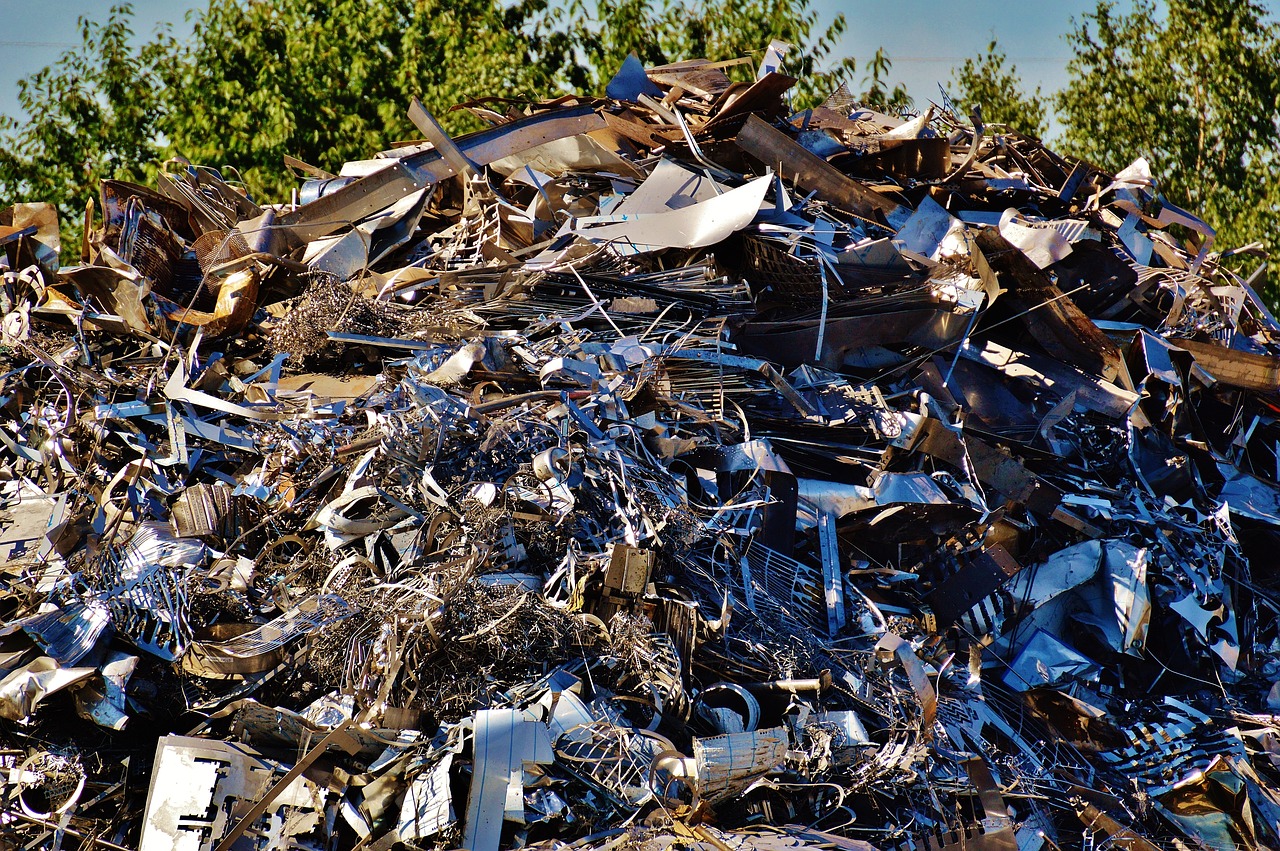
Essential Tools for Upcycling
When it comes to transforming scrap metals into stunning jewelry pieces, having the right tools is essential. Just like a painter needs brushes and a canvas, you need a set of specific tools to unleash your creativity and bring your vision to life. The beauty of upcycling lies not only in the materials you use but also in the craftsmanship that goes into each piece. So, let’s dive into the essential tools that can help you master the art of upcycling!
First and foremost, you’ll need some basic jewelry-making tools. These are your trusty companions that will assist you in cutting, shaping, and assembling your creations. Think of them as your toolkit for adventure! Here are some of the must-have tools:
- Pliers: A good set of pliers is essential for bending, twisting, and manipulating metal. You’ll want a variety, including flat-nose, round-nose, and chain-nose pliers.
- Cutters: Metal cutters are crucial for snipping and trimming scrap metals to your desired lengths. They make the process smooth and efficient.
- Soldering Equipment: If you plan to join pieces together, a soldering iron and solder are indispensable. This will allow you to create seamless designs that look professional.
Once you have your basic tools, consider expanding your toolkit with some advanced equipment. For instance, a metal stamping kit can help you personalize your jewelry with names, dates, or unique designs. Similarly, an etching kit allows you to add intricate patterns to your pieces, giving them a distinctive flair that can’t be achieved with basic tools alone.
Now, let’s not forget about the importance of tool maintenance. Keeping your tools in tip-top shape is vital for ensuring they last longer and perform better. Regularly clean your tools after use and store them in a dry place to prevent rust. A well-maintained tool is like a well-tuned instrument; it will make your crafting experience smoother and more enjoyable.
Lastly, safety should always be a priority when working with metals. Ensure you have protective gear such as gloves, goggles, and a mask to shield yourself from sharp edges and metal dust. Organizing your workspace can also help minimize accidents, keeping your creative environment safe and inspiring.
In summary, equipping yourself with the right tools is the first step in your upcycling journey. By investing in both basic and advanced tools, maintaining them properly, and prioritizing safety, you’ll be well on your way to crafting beautiful jewelry from scrap metals. Remember, each tool in your collection is a stepping stone towards creating something truly unique and sustainable!
Q1: What are the best types of scrap metals to use for jewelry making?
A1: The best types of scrap metals include copper, brass, aluminum, and silver. Each has its own unique properties and can be transformed into beautiful jewelry pieces.
Q2: Can I use tools I already have at home?
A2: Absolutely! Many household tools can be repurposed for jewelry making. Just ensure they are safe and suitable for working with metal.
Q3: How do I learn advanced techniques like metal stamping and etching?
A3: There are numerous online tutorials, workshops, and classes that can help you learn these advanced techniques. Practicing regularly will also improve your skills!
Q4: Is it necessary to have a dedicated workspace for upcycling?
A4: While it’s not mandatory, having a dedicated workspace can greatly enhance your crafting experience. It helps you stay organized and focused on your projects.
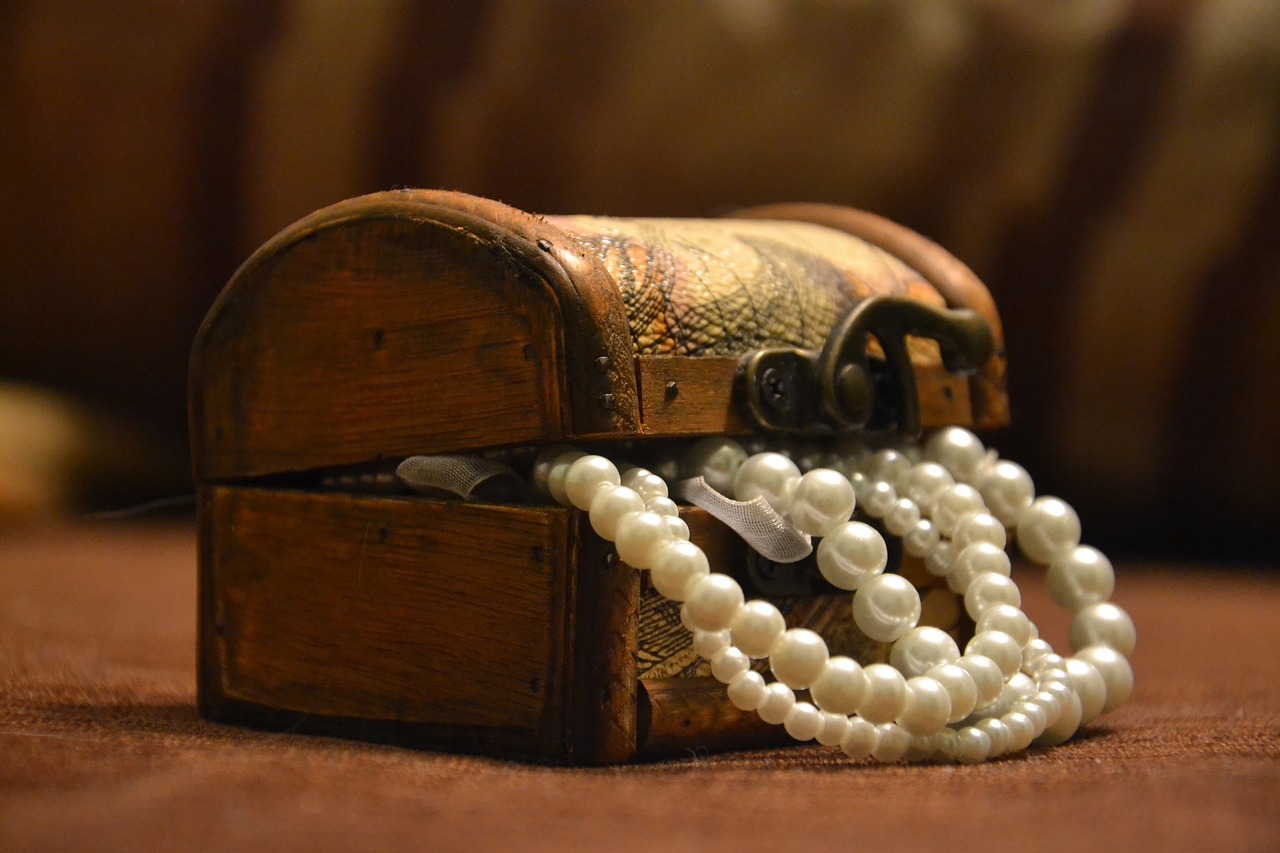
Basic Jewelry-Making Tools
When it comes to transforming scrap metals into stunning jewelry pieces, having the right tools is essential. Think of your tools as the paintbrushes of an artist; without them, your creative vision remains just that—a vision. So, what are the basic jewelry-making tools you need to get started on your upcycling journey? Let’s break it down!
First up, you’ll want a good pair of pliers. These are your best friends in jewelry making, as they allow you to bend, twist, and manipulate metal with precision. There are different types of pliers, such as needle-nose pliers for intricate work, and round-nose pliers for creating loops. Each type serves a unique purpose, and having a variety will enable you to tackle any design challenge that comes your way.
Next, you’ll need cutters. Wire cutters are crucial for snipping off excess metal, while metal shears are perfect for cutting larger pieces. Imagine trying to sculpt a masterpiece with dull tools; it just wouldn’t work! Ensuring your cutters are sharp and well-maintained will make your crafting experience smoother and more enjoyable.
Another indispensable tool is the soldering iron. This piece of equipment is essential for joining metal pieces together. Whether you’re creating a pendant or a pair of earrings, soldering allows you to fuse metals in a way that’s both strong and aesthetically pleasing. Just think of it as the glue that holds your artistic vision together!
For those who want to add intricate designs, a metal stamping kit is a must-have. This kit typically includes a set of stamps and a hammer, allowing you to imprint letters, symbols, or patterns into your metal pieces. It’s like writing your own story on each piece of jewelry, making it truly unique and personal.
Lastly, let’s not forget about the importance of a workbench or a designated workspace. Having a clean, organized area to work in not only enhances your creativity but also keeps your tools easily accessible. Think of your workspace as your personal studio; a clutter-free environment fosters inspiration!
To summarize, here’s a quick overview of the basic jewelry-making tools you should consider:
| Tool | Purpose |
|---|---|
| Pliers | Bending and manipulating metal |
| Cutters | Snipping and cutting metal |
| Soldering Iron | Joining metal pieces |
| Metal Stamping Kit | Adding designs and personalization |
| Workbench | Organized workspace for crafting |
With these basic tools in your arsenal, you’re well on your way to creating beautiful jewelry from scrap metals. Remember, the journey of upcycling is as much about the process as it is about the finished product. So, gather your tools, unleash your creativity, and let the transformation begin!
- What type of scrap metals can I use for jewelry making? You can use a variety of metals, including copper, brass, aluminum, and even silver. Just ensure they are clean and free of contaminants.
- Do I need any special training to work with metal? While some basic knowledge of tools and techniques is helpful, many DIY enthusiasts learn as they go. There are plenty of online tutorials to guide you!
- Can I sell my upcycled jewelry? Absolutely! Once you’ve created your pieces, consider setting up an online store or participating in local craft fairs to showcase your work.

Advanced Techniques
When it comes to transforming scrap metals into stunning jewelry, embracing can truly elevate your creations. These methods not only add intricacy but also allow for personal expression in your designs. One of the most exciting techniques is metal stamping. This process involves using metal stamps to imprint designs or letters onto the surface of your metal pieces. Imagine crafting a necklace with a personal message or a unique pattern that speaks to your style! The beauty of metal stamping lies in its versatility; you can create anything from simple shapes to elaborate motifs, making each piece distinctly yours.
Another fascinating technique is etching. This method allows you to create detailed designs by removing layers of metal to reveal beautiful patterns. Using a chemical solution or even a laser, you can etch intricate images or textures onto your jewelry. The result? A stunning piece that tells a story and showcases your artistic flair. Etching works particularly well on softer metals like copper and brass, which can be easily manipulated to achieve the desired effect.
If you're feeling adventurous, consider exploring mixed media techniques. This approach combines various materials, such as wood, resin, or even fabric, with your scrap metals. The fusion of different textures and colors can lead to truly unique jewelry pieces that stand out. For instance, you might create a pendant that features a metal base adorned with a colorful resin inlay, adding depth and character to your design.
Don't forget about the importance of finishing techniques. A well-finished piece not only looks polished but also enhances durability. Techniques like polishing, oxidizing, or applying a protective coating can significantly affect the final appearance of your jewelry. Polishing can bring out the shine in metals, while oxidizing can create a beautiful patina, giving your pieces an antique feel. Experimenting with these finishing touches can help you achieve the perfect look for your creations.
As you dive into these advanced techniques, remember that practice makes perfect. Don’t be afraid to experiment and make mistakes along the way. Each piece you create is a step towards mastering your craft. So grab your tools, get inspired, and let your imagination run wild as you transform scrap metals into wearable art!
Q: What types of scrap metals are best for jewelry making?
A: Common choices include copper, brass, aluminum, and silver. Each metal has unique properties, allowing for different styles and finishes.
Q: Do I need specialized tools for advanced techniques?
A: While basic jewelry-making tools are essential, investing in specific tools for stamping, etching, and polishing will enhance your capabilities and results.
Q: Can I sell my upcycled jewelry online?
A: Absolutely! Many artisans successfully sell their creations on platforms like Etsy, eBay, or through their own websites. Social media can also be a powerful tool for promotion.
Q: How do I ensure my jewelry is safe to wear?
A: Always use non-toxic materials and finishes. Conduct thorough research on the metals and chemicals you use, ensuring they are safe for skin contact.
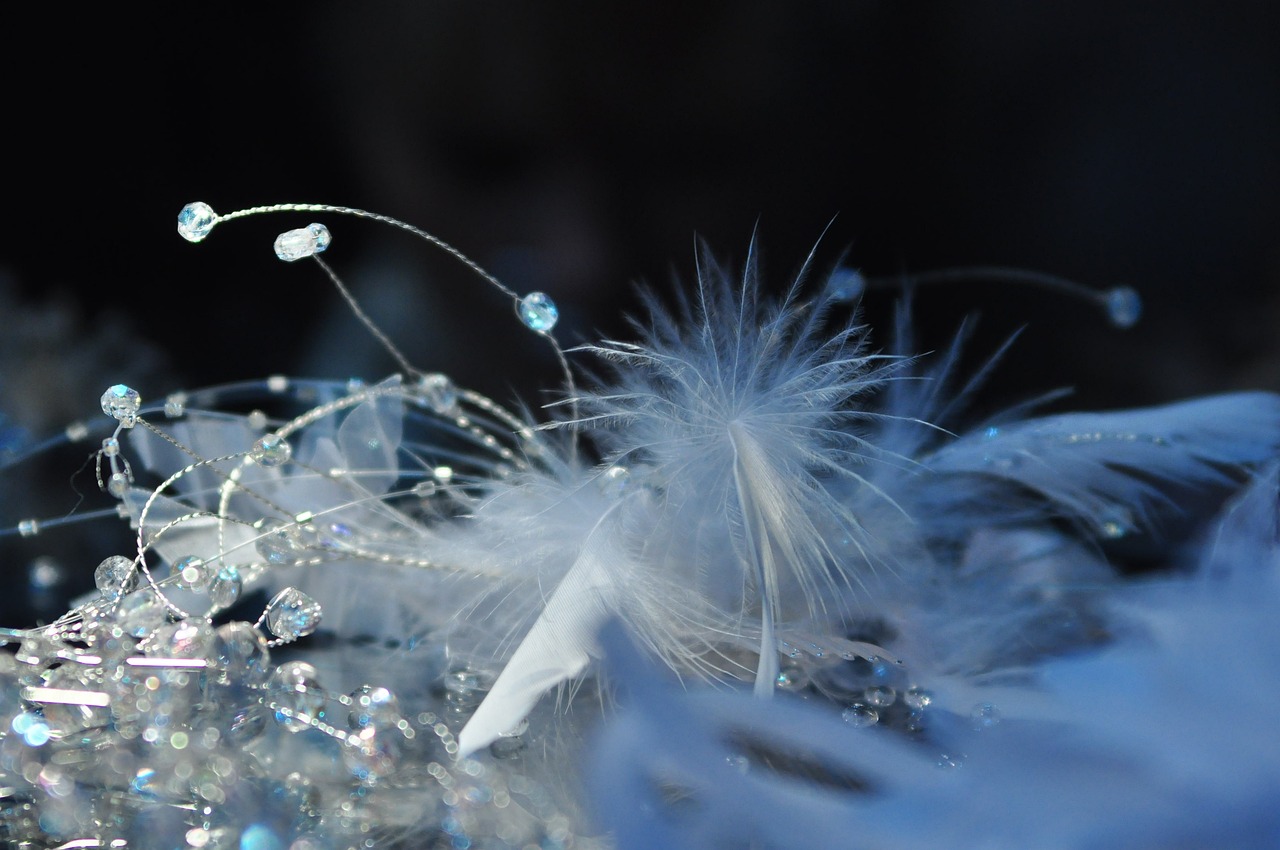
Tool Maintenance Tips
Maintaining your tools is not just about keeping them clean; it's about ensuring they remain effective and safe to use. Regular maintenance can significantly extend the life of your jewelry-making tools, allowing you to create stunning pieces without interruption. First and foremost, always clean your tools after each use. A simple wipe down with a soft cloth can remove dust, grime, and any residues from your scrap metals. For deeper cleaning, warm soapy water can be used, but make sure to dry them thoroughly afterward to prevent rusting.
Another essential aspect of tool maintenance is checking for any signs of wear and tear. For instance, if your pliers or cutters start to feel less sharp or effective, it might be time to sharpen or replace them. Additionally, lubricating moving parts, like the joints of pliers, can help maintain their functionality. A drop of machine oil can work wonders; just be sure to wipe off any excess to avoid getting oil on your materials.
It's also crucial to store your tools properly. Using a dedicated toolbox or organizer not only keeps your workspace tidy but also protects your tools from damage. Consider using a foam insert or magnetic strips for small tools, ensuring they don’t get lost or damaged. You might even want to label your toolbox to make it easier to find what you need when inspiration strikes!
Lastly, always remember to wear appropriate safety gear while maintaining your tools. Safety glasses and gloves can protect you from sharp edges and flying debris, ensuring that your tool maintenance routine is as safe as it is effective. By following these simple yet effective maintenance tips, you'll not only enhance your crafting experience but also ensure that your tools serve you well for years to come.
- How often should I clean my jewelry-making tools? It's best to clean your tools after each use to prevent any buildup of materials.
- What should I do if my pliers are rusty? You can remove rust using a rust remover or fine steel wool, followed by cleaning and lubricating them.
- Is it necessary to replace my tools regularly? While some tools may need replacement over time, proper maintenance can extend their life significantly.
- Can I use household cleaners on my tools? Avoid harsh chemicals; instead, opt for mild soap and water for cleaning.
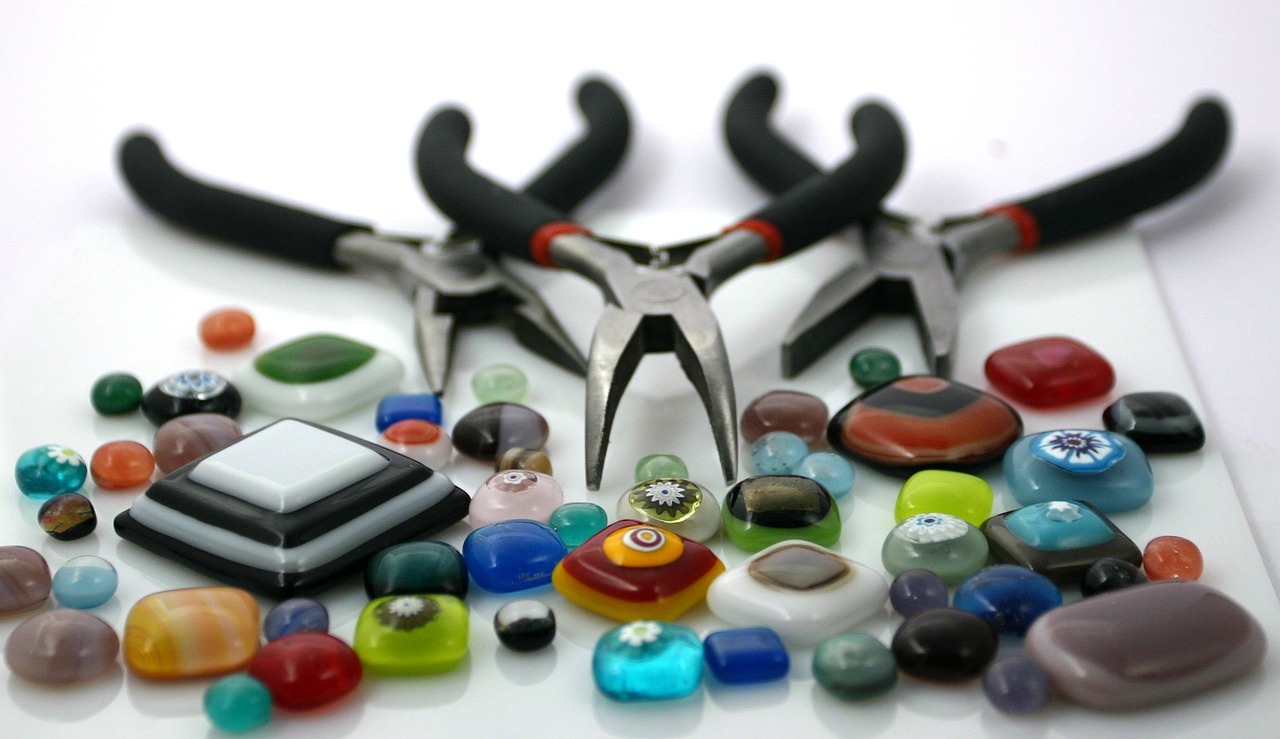
Safety Precautions
When diving into the creative world of upcycling scrap metals into stunning jewelry, safety should always be your top priority. Just like a knight dons armor before heading into battle, you need to arm yourself with the right protective gear. This isn't just about looking cool; it's about protecting yourself from potential hazards that come with working with metals. So, what do you need to keep in mind?
First and foremost, protective eyewear is a must. Tiny metal shards and dust can fly around when cutting or grinding metals, posing a risk to your eyes. Think of it as a shield for your vision! Additionally, wearing a dust mask can help you avoid inhaling harmful particles, especially when you're sanding or filing down rough edges.
But that's not all! Your hands deserve protection too. Invest in a good pair of cut-resistant gloves. These gloves will not only keep your hands safe from sharp edges but also provide a better grip when handling tools. Remember, a slip of the hand can turn a fun crafting session into an unfortunate trip to the emergency room.
Now, let’s talk about your workspace. A well-organized area can significantly reduce the risk of accidents. Ensure that your workspace is tidy and free from clutter. Keep tools and materials in designated spots, and make sure you have adequate lighting. You wouldn’t want to trip over a stray wire or miss a sharp edge because of poor visibility, right?
Moreover, it’s crucial to familiarize yourself with the tools you’ll be using. Each tool comes with its own set of risks; understanding how to use them properly can prevent many accidents. For example, when using a soldering iron, always remember to place it in a safe holder when not in use. This simple act can prevent burns and other injuries.
Lastly, it’s wise to have a first aid kit nearby. Accidents happen, even to the most cautious crafters. Having essentials like band-aids, antiseptic wipes, and gauze can make a world of difference in case of minor injuries. It’s like having a safety net; you might not need it, but it’s comforting to know it’s there!
In conclusion, while the journey of transforming scrap metals into jewelry can be thrilling and fulfilling, it’s essential to prioritize safety. By equipping yourself with the right gear, maintaining an organized workspace, and respecting the tools you use, you can enjoy your crafting experience without unnecessary risks. Remember, creativity should flow, not be hindered by preventable accidents!
Here are some common questions you might have about safety precautions while working with scrap metals:
- What type of gloves should I use? Look for cut-resistant gloves that provide a good grip and allow for dexterity.
- Do I need a specific type of mask? A dust mask or respirator is recommended when sanding or working with materials that create dust.
- How can I organize my workspace? Use storage bins, toolboxes, and labels to keep everything in its place and easy to find.
- What should I include in my first aid kit? Basic supplies like band-aids, antiseptic wipes, gauze, and scissors are essential for minor injuries.

Design Inspiration
When it comes to creating stunning jewelry from scrap metals, the possibilities are as vast as your imagination. Design inspiration can strike from various sources, and embracing this creativity is essential for any DIY enthusiast. Whether you're flipping through a fashion magazine or taking a stroll in the park, it’s crucial to keep your eyes peeled for elements that spark your interest. After all, transforming discarded materials into wearable art is not just about crafting; it’s about telling a story through your designs.
One of the most rewarding aspects of upcycling scrap metals is the ability to draw inspiration from the world around you. Nature, for instance, offers a treasure trove of ideas. Think about the intricate patterns found in leaves, the fluidity of water, or the rugged textures of tree bark. These organic shapes can be mimicked using scrap metals, allowing you to create pieces that resonate with the beauty of nature. Imagine a necklace that resembles the delicate curves of a vine or earrings that mimic the jagged edges of a rocky landscape. The natural world is a constant reminder that beauty can be found in imperfection, making it a perfect muse for your upcycled creations.
On the flip side, geometric patterns have also carved a niche in modern jewelry design. With their clean lines and bold shapes, geometric designs can add a contemporary flair to your collection. Think of simple triangles, circles, and squares that can be easily cut and shaped from metal scraps. The beauty of geometric patterns lies in their versatility; they can be minimalistic or intricate, depending on how you choose to assemble them. For example, a series of interlocking circles can create a stunning bracelet that’s both stylish and eye-catching.
To further ignite your creativity, consider exploring various themes that can guide your designs. Here are a few ideas to get you started:
- Vintage Revival: Incorporate elements from different eras, such as Art Deco or Bohemian styles, to create a nostalgic feel.
- Industrial Chic: Embrace the raw, unfinished look of metals to craft pieces that reflect an urban vibe.
- Whimsical Wonders: Use playful shapes and bright colors to create fun, eye-catching jewelry that tells a story.
As you embark on your design journey, remember that inspiration can come from anywhere. Keep a sketchbook handy to jot down ideas as they come, or take photographs of interesting textures and patterns you encounter. This way, you’ll have a visual reference to draw from when you sit down to create. Don't be afraid to experiment with different materials and techniques as well; sometimes the best designs come from happy accidents.
In conclusion, finding design inspiration for your upcycled jewelry is an adventure in itself. By looking to nature, embracing geometric patterns, and exploring various themes, you can create unique pieces that not only showcase your creativity but also promote sustainable fashion. So, grab that scrap metal, let your imagination run wild, and start crafting pieces that reflect your personal style!
Q1: Where can I find scrap metals for my jewelry projects?
A1: Scrap metals can be sourced from various places such as old jewelry, discarded appliances, hardware stores, and even local recycling centers. Always ensure that the materials are safe to use.
Q2: Do I need any special skills to start making jewelry from scrap metals?
A2: While some basic jewelry-making skills are beneficial, many techniques can be learned through practice and online tutorials. Start simple and gradually challenge yourself with more complex designs.
Q3: What are some common safety precautions I should take?
A3: Always wear protective gear such as gloves and safety goggles when working with metals. Ensure your workspace is organized and well-ventilated to avoid accidents and inhalation of harmful particles.
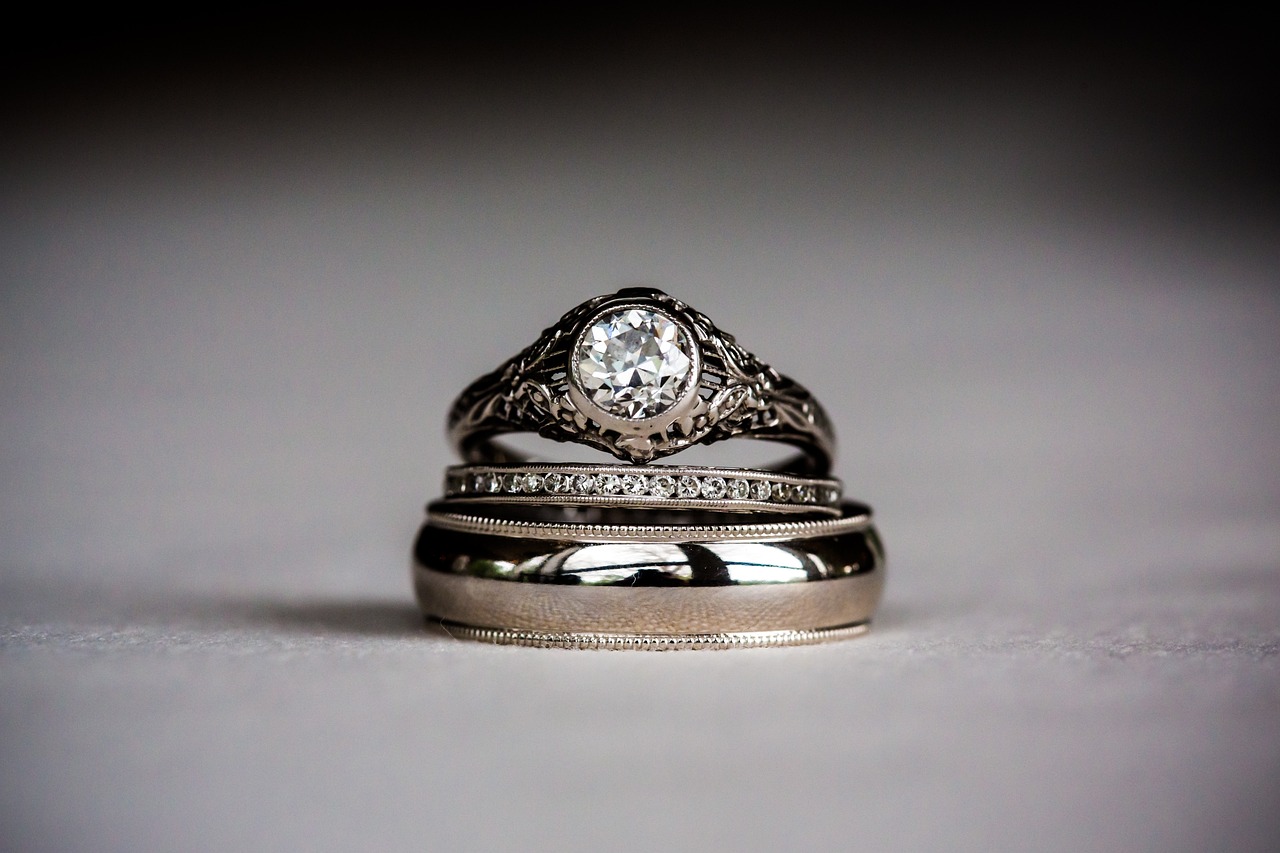
Nature-Inspired Designs
When it comes to creating jewelry from scrap metals, one of the most enchanting directions you can take is to draw inspiration from nature. Imagine crafting pieces that echo the beauty of the world around us—think of the delicate curves of a leaf, the intricate patterns of tree bark, or the graceful flow of a river. Nature offers a treasure trove of designs that can be translated into stunning jewelry, allowing you to not only express your creativity but also to celebrate the environment.
To get started, consider the various elements of nature that resonate with you. For instance, you might be inspired by the organic shapes found in flowers or the textures of stones and shells. By observing these elements, you can create jewelry that feels both timeless and unique. For example, a pendant that mimics the silhouette of a mountain range or earrings that resemble cascading waterfalls can evoke a sense of tranquility and connection to the earth.
Using scrap metals allows you to transform what might otherwise be discarded into beautiful representations of nature. You can experiment with different techniques such as hammering to create texture or patina to add color and depth, reminiscent of natural elements. Imagine a bracelet that reflects the rusted hues of autumn leaves or a necklace that captures the shimmering effect of sunlight on water. The possibilities are as vast as the landscapes that inspire them!
Here are a few ideas to help you channel nature into your designs:
- Floral Motifs: Use scrap metal to craft flowers, leaves, or vines. Incorporate different metal finishes to mimic the varying colors of petals and foliage.
- Animal-Inspired Pieces: Create jewelry that features animal shapes or patterns, like a butterfly wing or a fish scale, bringing a touch of wildlife into your collection.
- Geological Inspirations: Think about incorporating shapes and textures that mimic rocks, crystals, or even the layers of earth, giving your pieces a raw, organic feel.
As you embark on this creative journey, remember that nature is not just a source of inspiration; it’s also a reminder of the importance of sustainability. By upcycling scrap metals, you’re not only creating beautiful jewelry but also contributing to a more sustainable fashion industry. Each piece you make tells a story—not just of your artistic vision, but also of the materials you’ve chosen to repurpose. So, the next time you find yourself surrounded by scrap metals, take a moment to look outside. Nature is waiting to inspire your next masterpiece!
Q: How can I incorporate nature into my jewelry designs?
A: You can draw inspiration from various natural elements like flowers, animals, and landscapes. Use techniques such as texturing and patina to mimic the colors and forms found in nature.
Q: What types of scrap metals are best for nature-inspired jewelry?
A: Metals like copper, brass, and aluminum are excellent for creating nature-inspired pieces due to their malleability and ability to take on different finishes.
Q: Do I need advanced skills to create nature-inspired jewelry?
A: While basic jewelry-making skills are helpful, many nature-inspired designs can be achieved with simple techniques. Start small and gradually experiment with more complex methods as you gain confidence.
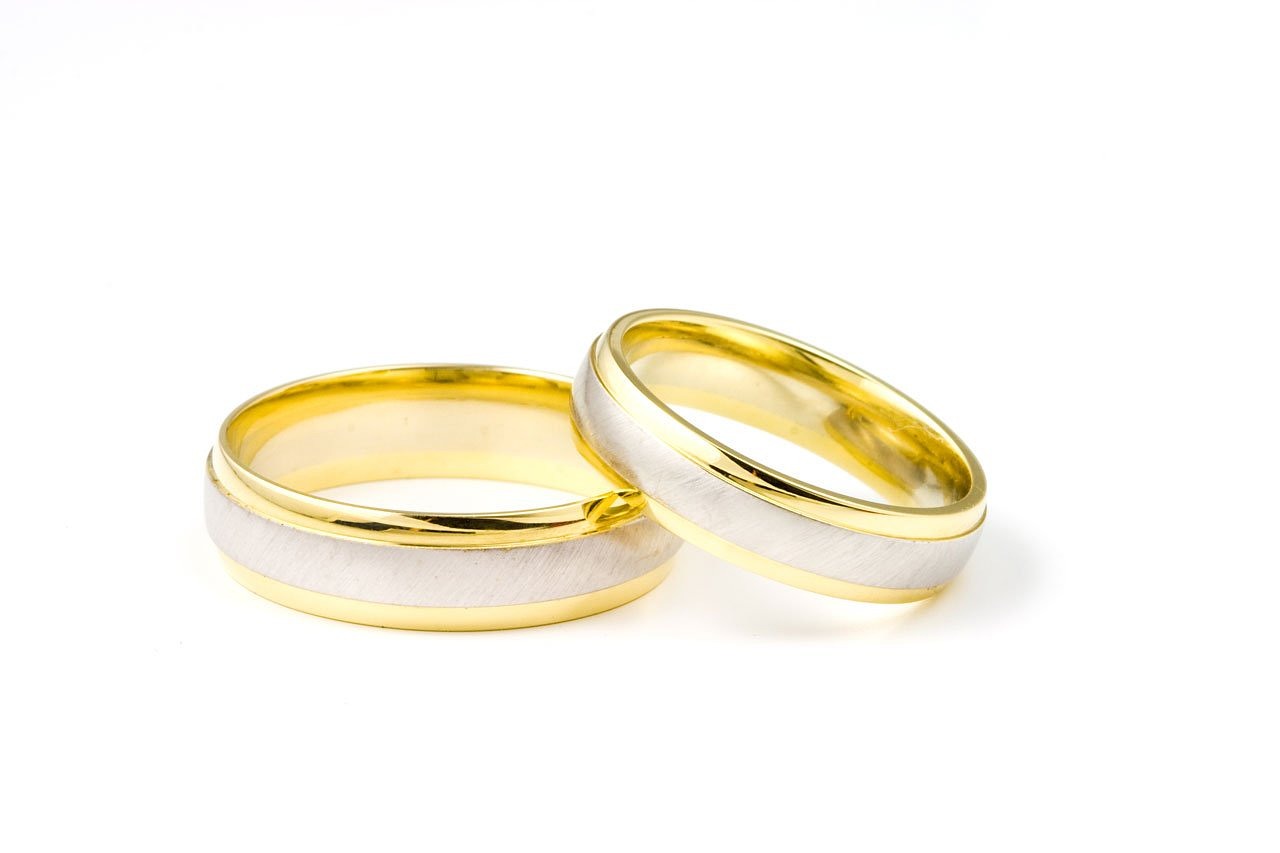
Geometric Patterns
Geometric patterns in jewelry design are not just a trend; they are an everlasting aesthetic that captivates and intrigues. When you think about geometry, you might picture a math class filled with angles and lines, but in the world of jewelry, these shapes transform into stunning pieces that can express your personality and creativity. Imagine wearing a necklace that features a striking hexagon or a pair of earrings shaped like delicate triangles; these designs can make a bold statement while remaining chic and stylish.
One of the best aspects of using scrap metals for geometric jewelry is that the materials often lend themselves beautifully to these designs. You can easily cut, bend, and manipulate metal scraps into various geometric shapes, allowing for a level of creativity that is both liberating and exciting. Think of it like playing with building blocks, where each piece you create can fit together in countless ways. The beauty of geometric patterns lies in their simplicity and versatility; they can be minimalistic or intricate, depending on your vision.
When crafting geometric jewelry, consider the following techniques to enhance your designs:
- Layering: Combine different shapes and sizes to create depth and interest in your pieces. Layering can turn a simple design into a statement piece.
- Negative Space: Utilize the space around the shapes to create a sense of balance and harmony. This technique can make your designs feel more open and airy.
- Texturing: Add texture to your geometric shapes through techniques like hammering or etching. This can give your pieces a unique touch and enhance their visual appeal.
Moreover, geometric patterns allow for endless customization. You can play with colors, finishes, and sizes to create something truly unique. For example, consider mixing metals like copper, brass, and silver to create a visually stunning piece that showcases contrasting colors and textures. The juxtaposition of different materials can elevate your design and make it stand out in a crowd.
As you dive into the world of geometric jewelry, don’t hesitate to draw inspiration from various sources. Nature, architecture, and even everyday objects can spark ideas for your designs. For instance, the symmetry of a snowflake or the angularity of a skyscraper can lead to innovative jewelry pieces that are both beautiful and meaningful. Remember, the key to successful geometric jewelry is to embrace your creativity and let your imagination run wild!
Q: What materials can I use for geometric jewelry?
A: You can use various scrap metals such as copper, brass, aluminum, and even mixed materials like wood or resin to craft geometric jewelry. The choice of materials can significantly impact the final look and feel of your pieces.
Q: Do I need special tools for making geometric jewelry?
A: While basic jewelry-making tools like pliers and cutters are essential, you may also want to invest in metal shears, a soldering iron, and a bench block for more advanced techniques. However, many geometric shapes can be created with just a few basic tools.
Q: Can I sell my geometric jewelry?
A: Absolutely! Many people are drawn to unique, handmade jewelry. You can sell your creations online through platforms like Etsy or at local craft fairs. Building a strong online presence can help you reach a wider audience.

Marketing Your Upcycled Jewelry
Once you've crafted your stunning upcycled jewelry pieces, the next exciting step is to share your creations with the world. Marketing your jewelry effectively can make all the difference in reaching potential customers and turning your passion into a thriving business. But where do you start? Let's dive into some effective strategies that can help you promote your unique pieces and connect with your audience.
First off, establishing a strong online presence is crucial. In today’s digital age, most consumers shop online, and having a well-designed website or an engaging social media profile can significantly enhance your visibility. Consider platforms like Instagram and Pinterest, which are visually driven and perfect for showcasing your beautiful jewelry. Post high-quality images of your creations, share behind-the-scenes glimpses of your crafting process, and engage with your followers to build a community around your brand.
Another effective method is to utilize e-commerce platforms such as Etsy or Shopify. These platforms are tailored for artisans and allow you to set up a shop with minimal hassle. Make sure to optimize your product listings with relevant keywords, captivating descriptions, and stunning photographs. This way, your jewelry can be easily discovered by those searching for unique, handcrafted items. Don't forget to leverage SEO tactics to improve your visibility on search engines!
Participating in local craft fairs and artisan markets can also be a fantastic way to market your upcycled jewelry. These events not only allow you to showcase your pieces in person but also provide an opportunity to connect with fellow artisans and potential customers. Make your booth inviting with eye-catching displays and informative signage that tells the story behind your upcycled materials. Personal interactions can create lasting impressions, and word-of-mouth can be a powerful marketing tool.
Networking is another essential aspect of marketing your jewelry. Building relationships with other artisans can lead to collaborations, shared resources, and valuable insights into the industry. Attend workshops, join local artisan groups, or participate in online forums to expand your network. Not only will you gain knowledge and inspiration, but you’ll also increase your visibility within the community.
Lastly, consider creating a newsletter to keep your audience updated on new collections, special promotions, and upcoming events. This direct line of communication can help maintain interest and encourage repeat customers. Offer exclusive discounts or early access to new designs for subscribers to incentivize sign-ups.
In summary, marketing your upcycled jewelry involves a blend of online and offline strategies. By establishing a strong online presence, utilizing e-commerce platforms, participating in local events, networking with other artisans, and maintaining communication with your audience, you can effectively share your passion for sustainable fashion and reach a wider audience.
- What are the best platforms to sell upcycled jewelry?
Some of the best platforms include Etsy, Shopify, and local craft fairs. Social media platforms like Instagram and Facebook can also be effective for marketing.
- How can I improve my online visibility?
Utilize SEO strategies, post high-quality images, and engage with your audience through social media to enhance your online presence.
- Is networking important in the jewelry-making community?
Yes! Networking can lead to collaborations, shared resources, and valuable insights that can help you grow your brand.

Building an Online Presence
In today's digital age, establishing a strong online presence is crucial for any artist, especially those venturing into the world of upcycled jewelry. Think of your online presence as your virtual storefront; it needs to be inviting, engaging, and reflective of your unique style. But how do you create that captivating online persona? Well, it starts with choosing the right platforms to showcase your work. Popular options include social media sites like Instagram and Pinterest, as they are highly visual and allow you to connect directly with potential customers. Consider setting up an Etsy shop or a personal website where you can sell your pieces and share your story.
When curating your online presence, remember that consistency is key. Use a cohesive color palette and style across your platforms to create a recognizable brand. This doesn’t just mean aesthetics; your voice and messaging should also be consistent. Share your journey, the inspiration behind your creations, and the process of upcycling scrap metals. People love a good story, and by sharing yours, you create a connection that can translate into sales.
Engagement is another vital aspect of building your online presence. Don’t just post and ghost! Interact with your followers by responding to comments, asking for their opinions, and even hosting giveaways. This creates a community around your brand and encourages word-of-mouth marketing. You might even consider collaborating with other artisans or influencers to reach a broader audience. Remember, the more people see your work, the more likely they are to remember you and your unique pieces.
To further enhance your visibility, utilize SEO strategies. This means optimizing your posts with relevant keywords that potential customers might use when searching for upcycled jewelry. For instance, phrases like “sustainable jewelry,” “handmade metal accessories,” or “eco-friendly adornments” can help your content rank higher in search results. The better your SEO, the more traffic you’ll drive to your shop or profile.
Finally, don't underestimate the power of analytics. Platforms like Instagram and Facebook provide insights into how your posts are performing. Pay attention to which types of content resonate most with your audience and adjust your strategy accordingly. This data-driven approach will help you refine your online presence and ultimately lead to more sales.
Q: How can I effectively market my upcycled jewelry online?
A: Start by creating a visually appealing profile on platforms like Instagram and Etsy. Share high-quality images of your work, engage with your audience, and utilize SEO strategies to increase visibility.
Q: What social media platforms are best for showcasing jewelry?
A: Instagram and Pinterest are highly recommended due to their visual nature, but don’t overlook Facebook and TikTok for broader engagement opportunities.
Q: How often should I post to keep my audience engaged?
A: Aim for consistency rather than frequency. Posting a few times a week with quality content is more effective than posting daily with lower-quality images.
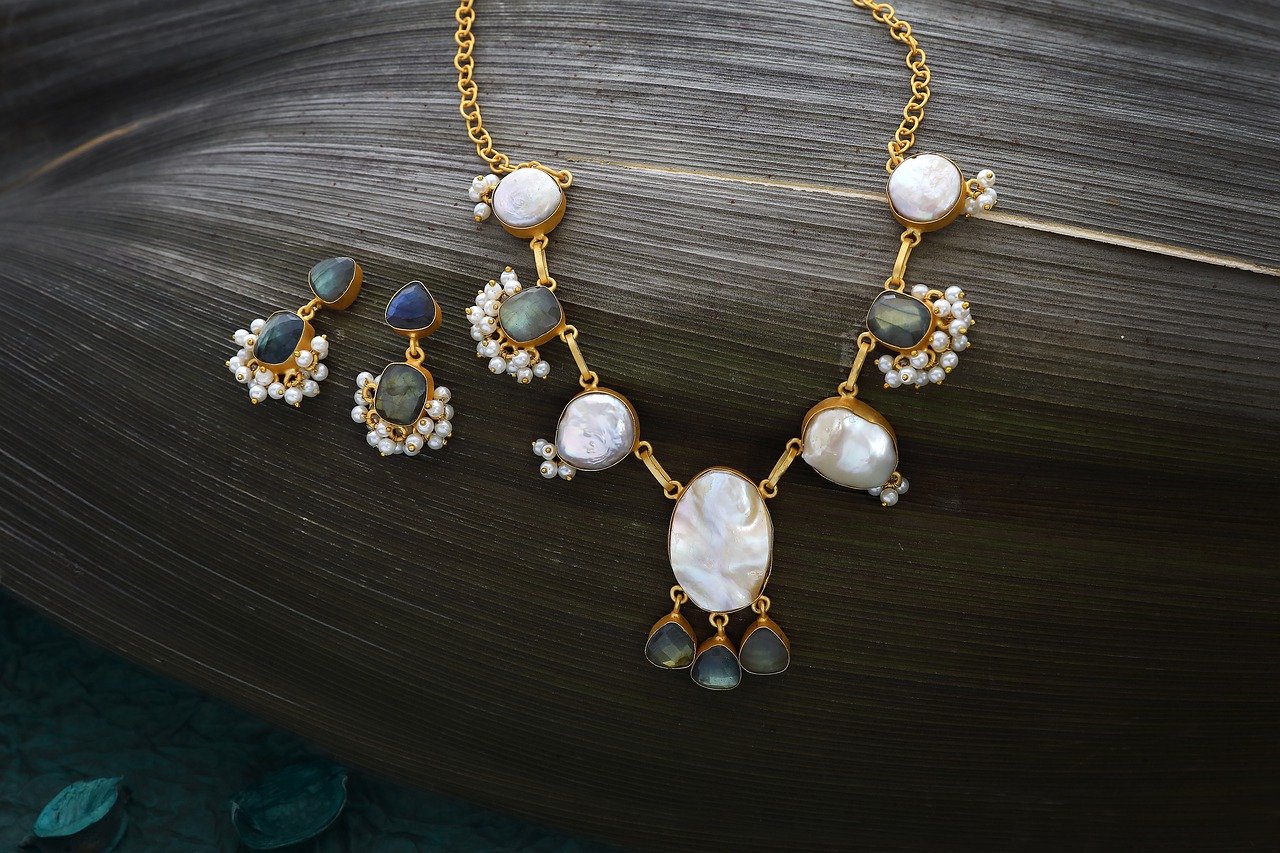
Networking with Other Artisans
Networking with other artisans can be one of the most rewarding aspects of your upcycling journey. Imagine walking into a room filled with people who share your passion for transforming scrap into stunning jewelry; it’s like finding a hidden treasure! Engaging with fellow creators not only broadens your perspective but also opens doors to invaluable opportunities. Whether you're sharing techniques, collaborating on projects, or simply exchanging ideas, every interaction can spark inspiration and fuel your creativity.
One of the best ways to start networking is by attending local craft fairs and artisan markets. These events are a goldmine for meeting like-minded individuals who understand the challenges and triumphs of the craft. You can learn about their experiences, gain insights into their creative processes, and even discover potential mentorship opportunities. Plus, these gatherings often feature workshops where you can enhance your skills while building connections.
Social media platforms, particularly Instagram and Facebook, have revolutionized the way artisans connect. By following and engaging with other creators, you can showcase your work and gain feedback from a supportive community. Don’t hesitate to comment on their posts or share your thoughts; building relationships online can lead to collaborations and even joint marketing efforts. Remember, the more you engage, the more visible you become in the artisan community.
Moreover, consider joining local or online groups dedicated to jewelry making and upcycling. These communities often host challenges, share resources, and provide a platform for members to showcase their work. Being part of such groups not only enhances your skills but also keeps you updated on trends and techniques that can elevate your craft. Here are a few benefits of joining these communities:
- Skill Development: Participate in workshops and tutorials to refine your techniques.
- Resource Sharing: Gain access to tools, materials, and tips that others have found useful.
- Emotional Support: Connect with others who understand the ups and downs of the crafting journey.
Lastly, don’t underestimate the power of collaboration. Working with other artisans can lead to unique creations and expanded audiences. For instance, consider partnering with a local artist to create a limited edition line of jewelry that combines your styles. This not only diversifies your offerings but also introduces your work to their followers, creating a win-win situation.
In conclusion, networking with other artisans is essential for growth and innovation in your jewelry-making journey. By building relationships, sharing knowledge, and collaborating, you can transform not just scrap metals into jewelry but also your entire creative experience. So, get out there, connect, and watch your artistic horizons expand!
Q: How can I find local artisan events?
A: Check community bulletin boards, local craft stores, and social media groups for upcoming events. Websites like Eventbrite also list various craft fairs and workshops.
Q: What should I bring to networking events?
A: Bring business cards, samples of your work, and a positive attitude! Being prepared can help you make lasting impressions.
Q: How can I effectively use social media for networking?
A: Engage with other artisans by liking, commenting, and sharing their work. Use relevant hashtags to increase your visibility and attract followers who appreciate your craft.
Q: What are some good online platforms for artisan networking?
A: Consider joining platforms like Etsy, Facebook groups, and Instagram. These platforms are great for showcasing your work and connecting with other artisans.
Frequently Asked Questions
-
What types of scrap metals can be used for jewelry making?
You can use a variety of scrap metals for jewelry making, including copper, brass, aluminum, and even some stainless steel. Each type of metal has its unique properties and can be transformed into beautiful pieces. Just think of it as a treasure hunt in your garage or local scrap yard!
-
Do I need special tools to work with scrap metals?
While you can start with basic jewelry-making tools like pliers and cutters, having specialized tools such as soldering equipment and metal stamping kits can significantly enhance your crafting experience. It’s like upgrading from a butter knife to a chef’s knife—your creations will thank you!
-
How can I ensure my safety while upcycling scrap metals?
Safety is key! Always wear protective gear such as gloves and goggles when working with metals. Organizing your workspace can also prevent accidents. Think of it as setting up a safe zone where creativity can flourish without any bumps or bruises!
-
What are some design inspirations for my jewelry?
Nature-inspired designs and geometric patterns are fantastic starting points. You can create organic shapes that mimic leaves or flowers, or opt for sleek geometric lines for a modern touch. It’s all about letting your imagination run wild!
-
How can I market my upcycled jewelry effectively?
Building an online presence through social media and e-commerce platforms is a great way to showcase your work. Additionally, participating in local craft fairs and networking with other artisans can help you reach a broader audience. It’s like throwing a party for your creations—invite everyone to see what you’ve made!



















